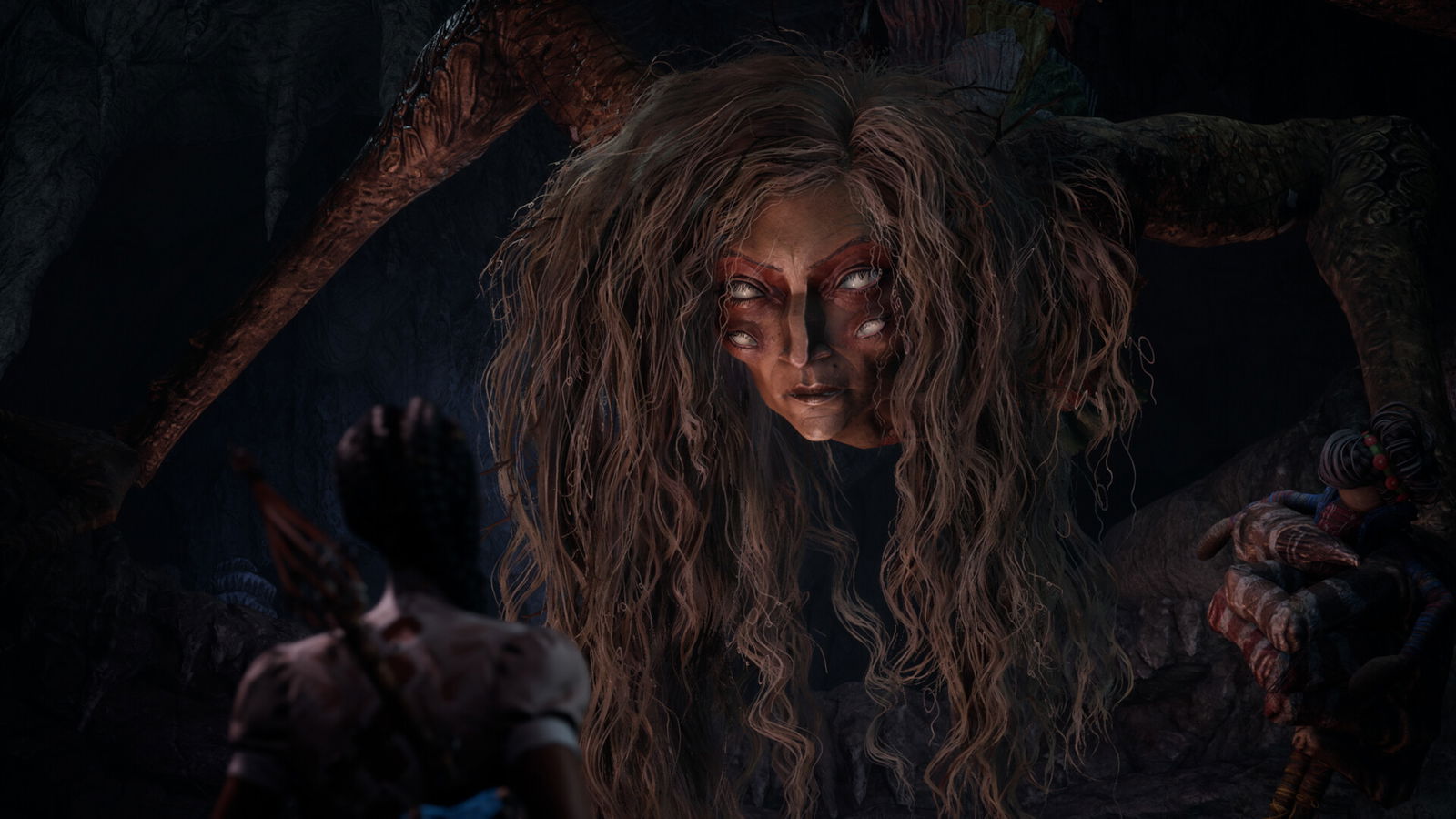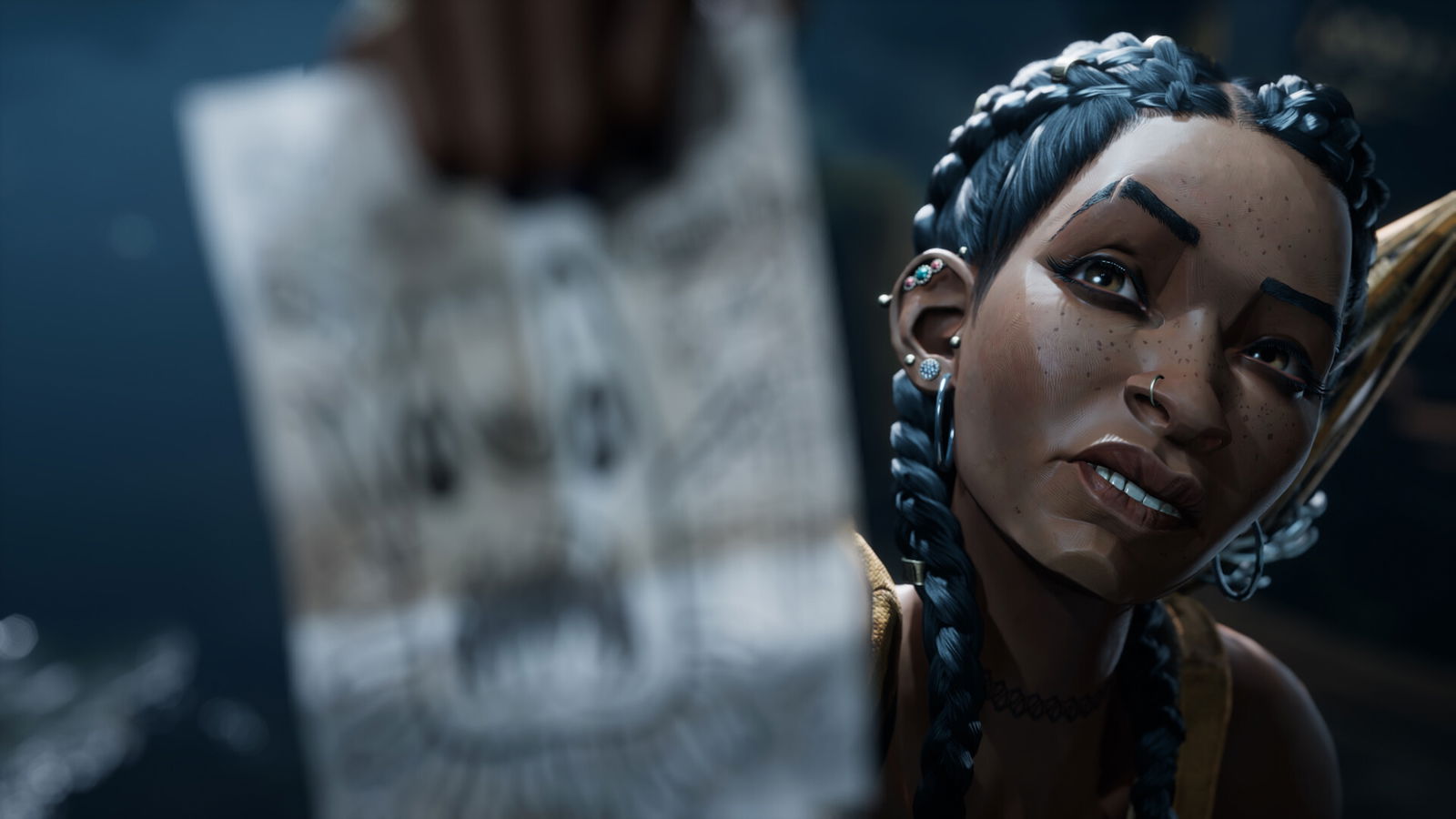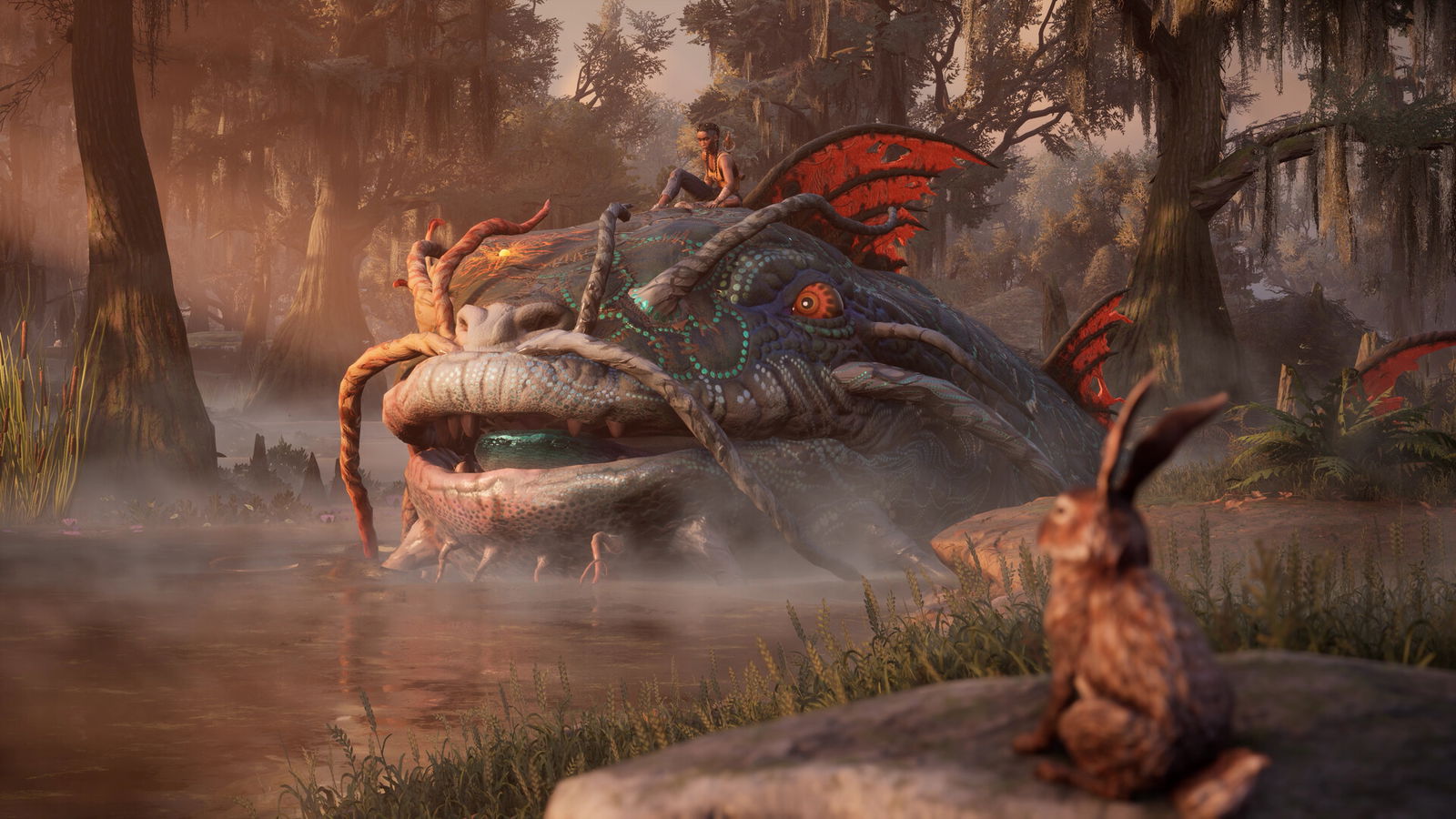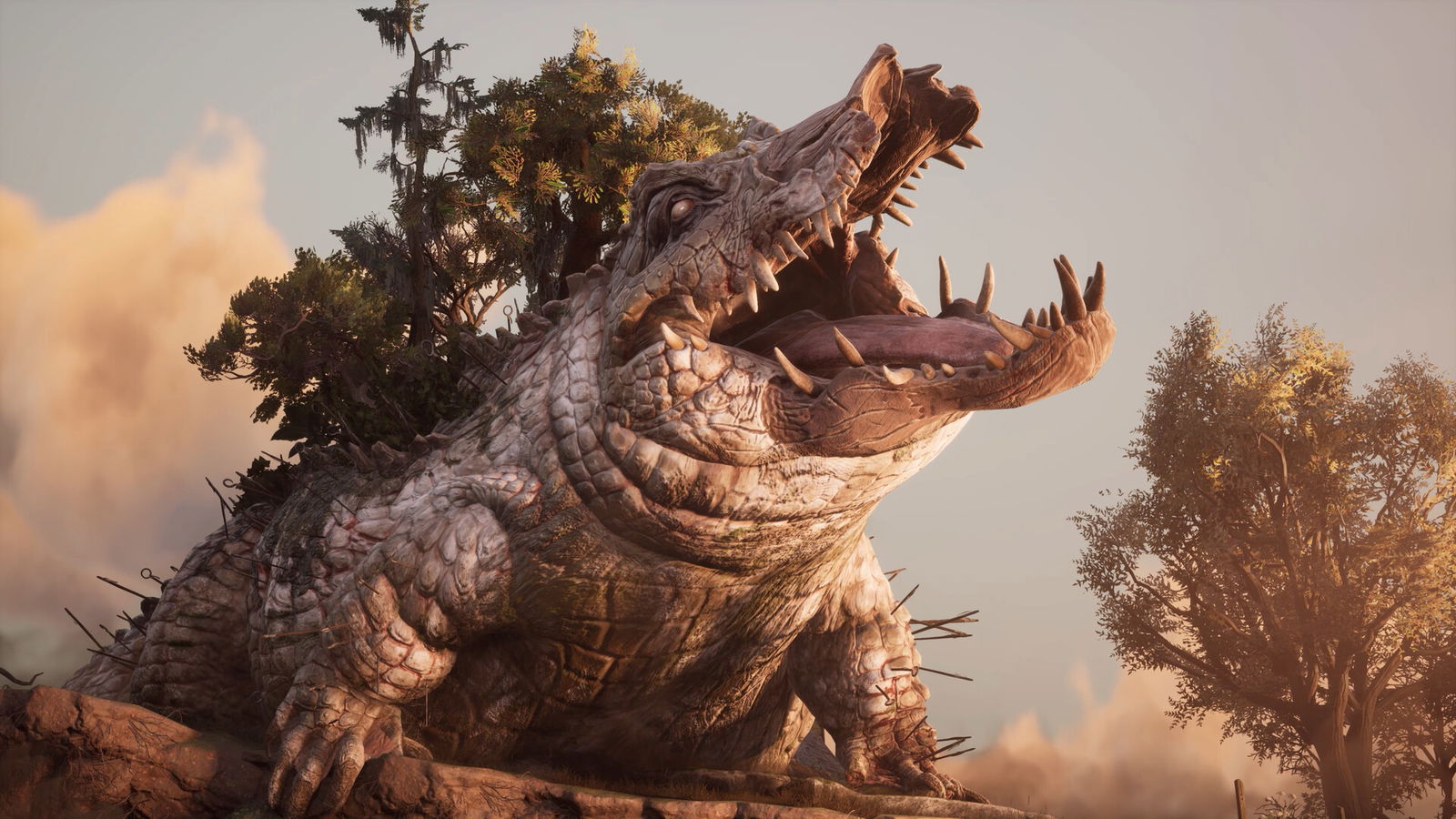South of Midnight is shaping up to be one of the most intriguing releases slated for consoles and PC this year. It blends Southern Gothic storytelling with engaging gameplay and a visual style, unlike many other games in the genre. Building that universe requires storytelling that captures the essence of its time and place while inviting the player into its world. Combined with music that sets the stage for the experience, these elements work together to create something unique, engaging, and compelling.
This combination can only succeed if all aspects work in harmony, and that’s exactly what playing South of Midnight feels like—an experience designed to draw the player into its dark world while immersing them in the pain and struggles of its characters. But building such an intricate world is no easy feat. So when CGMagazine had the chance to speak with Writer and Narrative Director Zaire Lanier and Audio Director Chris Fox from Compulsion Games, we jumped at the opportunity.
From the inspiration behind the story and lore of South of Midnight to how it all intertwines with the music and sound design to create an unforgettable experience, the developers behind South of Midnight offer a clear picture of the immense effort that went into making this game so special.
I wanted to quickly touch on South of Midnight’s darker tone. From all the previews shown so far, I didn’t realize just how dark some of the elements get. How did you approach creating that story and deciding where to draw the line? Did you ever feel something was too much, or did you aim to fully embrace the darkness alongside the light?

Zaire Lanier: It was definitely a balance. We drew inspiration from Southern Gothic books and media, where characters rarely have good endings. In that genre, suffering is often inevitable—they live tortured lives and die tortured deaths.
However, with this game, we didn’t want it to feel entirely nihilistic or hopeless. Hazel, as she weaves, fixes things—but not completely. For example, in Benji’s story, he doesn’t become a boy again after Hazel heals his wound, but he does change. His transformation brings him a sense of peace.
He’s happier now. The difference is that Hazel sees your story, understands it, and empathizes with you. You get to see Benji as a boy, and she’ll comment, “Oh, he had a nice smile,” or, “I’m so sorry they did that to you.” Sometimes, all you want is for someone to acknowledge that what you went through was really messed up.
You can’t go back to who you were before your trauma or before whatever happened to you, but that doesn’t mean it has to define you. You’ll be a different person, tree, creature—whatever—afterwards. However, if someone comes along and offers a helping hand, something good can come from it. Even if it’s not fixed in the way you might want it to be. I’m sure Benji would love to be a boy again, but that’s just not what happened.
I wanted to talk about the different entities and how you’ve handled the resolution of these stories in South of Midnight. For example, in Benji’s story, you talk to Rhubarb early on and deal with Benji, but you never really give Rhubarb that sense of catharsis or closure. Was that a deliberate choice to say, “Okay, now he’s done his part—that’s his ending”?
Zaire Lanier: Yes, in a way. There’s no satisfying conclusion to that situation. Maybe Rhubarb will go to the police and say, “I had some visions about a young man,” but there’s no good way to resolve it.
I don’t know if you noticed, but later, Hazel passes by Rhubarb and mutters something like, “You deserve everything you got.” She expresses anger at what Rhubarb did. Personally, I think if Rhubarb found out her brother’s spirit was trapped in a tree, it would make things even worse for her.
The guilt just compounds itself. Sometimes, there aren’t satisfying endings. We all have situations in life where we feel wronged, and the other person never apologizes or sees our perspective. I just want to understand why they did what they did, but we only ever get one side of it. In this case, I think his guilt is his punishment. There’s no way to explain yourself out of that.

Earlier, you mentioned that many of South of Midnight’s stories are inspired by folk tales. Did you ever consider including direct adaptations of specific tales—like, “I love this one; it has to be in here”—or did you decide to make it more abstract to avoid focusing on a single subject?
Zaire Lanier: We incorporated these concepts strategically to fit Hazel’s journey. They provide a strong foundation and framework for what a creature is, but not necessarily a fully defined entity. Take the Rubaroo from the story trailer, for example. It’s often depicted as a werewolf-like creature in media, but we put our own spin on it.
We have the framework, but not a rigid, fully fleshed-out version. It’s similar to Bigfoot—there are no definitive pictures or established archetypes. No one can point to a single official Bigfoot story. The same goes for other legends, like the giant catfish; different people tell different versions. So, we take that framework and ask: “What do we want to accomplish with it?”
I am a big fan of murder ballads, and a lot of the music in South of Midnight was reminiscent of those types of songs. Was that intentional?
Chris Fox: Yeah, it wasn’t that we were directly drawing from Tom Waits, but when we were initially deciding on the style of music, we thought, “Yeah, this definitely fits the murder ballad territory.” We even used that term. Then, we asked ourselves, “What’s the musical focus?” We decided that the fiddle had to be prominent, so we wanted to play on that. Interestingly, it ended up becoming an instrument that the NPC plays in South of Midnight.
So we have this very interesting transition… I was going to say something a bit more technical, like “trans-diegetic,” but I want to avoid that. What I mean is that it’s something that moves from being part of the soundtrack to becoming an actual element in South of Midnight, physically existing in space. We experimented a lot with that, blending the soundtrack with 3D-placed instrumentation that you can localize in your ears or around the room if you have more speakers. We really took that into consideration, allowing the music to follow the narrative. For each of our creatures or zones, the music was based on descriptors we created for them.

Just to follow up on that, I’m not sure if this is a coincidence or if it’s how you’ve timed it, but when you’re climbing the tree at the end of the section, the song seems to last just the right amount of time to reach the top. Was that a coincidence, or was it composed in a way that allows for some flexibility—like adding extra time or adjusting it so the music crescendos when you reach the top?
Chris Fox: Yes, it’s interactive. If you were to stop or die as a player, the song would loop, playing an instrumental section until you progress to the next part. The technology we use with Wise is common in the industry, and it allows for transitions on the next bar or beat. So, you don’t really feel the change. The song is split into multiple sections, but if you complete the entire climb, you won’t notice a break in the music.
I just wanted to wrap up by asking for people walking into South of Midnight they might not know what to expect. They might not know how dark or personal the story is. What do you hope they take away after playing this 8 to 12-hour experience?
Zaire Lanier: For me, watching Hazel’s journey, I hope it resonates with people. I hope they really enjoy the game and that it speaks to them. It’s a game for everyone, but I know it will especially resonate with our Southern and Black audiences. Still, it’s a story about a daughter, pain, trauma, and empathy that anyone can relate to. I hope people feel a sense of hope after finishing South of Midnight.
I don’t want people to go through difficult things, but if someone identifies with those feelings in Hazel’s story, I hope they see how Hazel reacts. She’s not judging people or yelling at them. She’s taking things in stride, trying to understand others and doing what she can to help fix things. None of us are perfect; we’re not going to have all the answers, but we can listen to others and be more empathetic, seeing the people in our lives for who they are.
I hope that younger players especially look up to Hazel. She’s brave, funny, smart, and empathetic. If I were 19, I’d want to hang out with her. As a parent, I’d love for my kids to have a friend like Hazel. I hope she’s someone people can relate to or look up to, someone they think, “She’s cool; I want to be like her.” If someone was being bullied, I think Hazel would step in and stop it. That’s something I hope really comes through.

Chris Fox: I hope people feel connected to the music, their actions, and then afterwards maybe they, I don’t know, they just keep singing those songs, maybe they play some covers of those songs, and the game goes on in another medium, in a way.
Do you plan to release the songs on Spotify or anything like that?
Chris Fox: Yeah, the digital release hasn’t been announced yet, but we’ve got the pre-order up for vinyl. But we should probably have these things available for people to play and enjoy on other mediums.
Thank you so much for your time.




